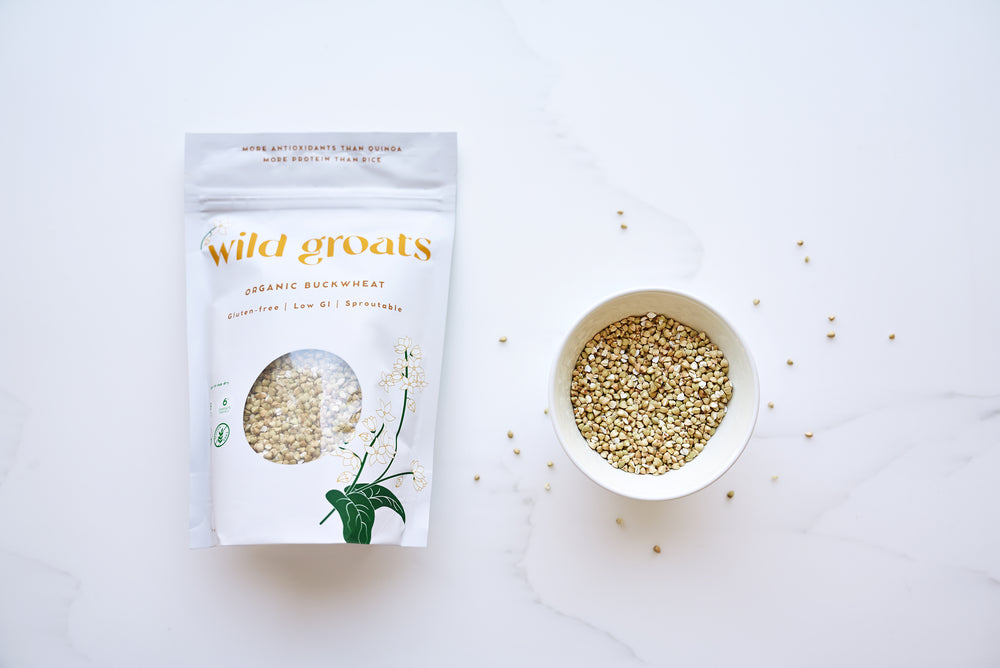The Biggest Problem with the Gluten-Free Industry

In today’s day and age, 'gluten-free' has become a mainstream health buzzword. As more and more people choose to limit their gluten intake or go gluten-free completely in their diet, we’re seeing a shift in the food industry. Restaurants are expanding their menus to include gluten-free options, and more brands are selling gluten-free products. Some grocery stores even have a dedicated section just for gluten-free!
Another reason for the rise in the popularity of gluten-free is that those consuming gluten-free products aren’t always necessarily doing so because they have been diagnosed with gluten allergies or the more severe celiac disease; there are so many people opting for the gluten-free option simply due to a belief that it is healthier. And it makes sense why. Gluten has garnered a bad reputation for its history of genetic modification and its link to symptoms such as autoimmune diseases, inflammation, 'wheat-belly', sluggishness, brain fog, digestive issues, and more.
So, because of this, many people see the 'gluten-free' label and immediately assume it’s better for the body. But that’s not always true. As gluten-free products such as cookies, bread, cakes, flours, pasta, pizza, tortillas, crackers, and more become increasingly available, we must remember that, when it comes down to it, processed food is still processed food. Many of the products just mentioned use ingredients such as high-glycemic flours or thickeners to mimic the taste, texture, and appearance of the gluten-containing products we’ve grown to be familiar with. These key ingredients actually cause blood sugar levels to spike, thereby triggering inflammation (which is what those with celiac disease and gluten intolerances aim to avoid by eliminating gluten).

To help you better identify these ingredients, check out the list below that we gathered from Food Babe Varni Hari’s post Trying To Avoid Gluten? Don’t Make These Common Mistakes!:
- "Tapioca Starch – One of the main ingredients used to replace wheat flour is “tapioca starch”, which is very high in carbohydrates, but hardly contains any fiber, fat, protein, vitamins or minerals, and basically just supplies empty calories that can spike blood sugar more than refined sugar does.
- Rice Starch, Rice Flour & Brown Rice Syrup – Rice is a very common in gluten-free diets, but it’s notoriously contaminated with arsenic, which is a “potent human carcinogen” according to scientists at Consumer Reports and classified as a group 1 carcinogen by the International Agency for Research on Cancer. In 2012, Consumer Reports tested more than 200 rice products and found significant levels of arsenic in several rices (especially brown), rice cereals, rice cakes, rice crackers, rice pasta, rice flours, and brown rice syrup.
- Corn & Soy – Corn and soy ingredients (corn meal, corn starch, corn syrup, soybean oil, soy lecithin) are found in a lot of gluten-free pastas, crackers, and cookies. When you see anything made from conventional corn or soy on a label, it’s a pretty safe bet that it’s genetically modified (GMO) because the vast majority of these crops in the U.S. are GMO. Roundup-Ready GMO crops are designed to be sprayed with the herbicide glyphosate and have been shown to accumulate glyphosate. This is a big deal because glyphosate has been deemed a “probable carcinogen” according to the International Agency for Research on Cancer, and is also believed to destroy healthy gut bacteria.
- Refined Sugar – Gluten-free foods use sugar to replace the flavors lost when grains were removed, and it’s almost impossible to find a gluten-free product without added refined sugar! You’ll often see sugar listed several times on the ingredient list in its many different forms: corn syrup, maltodextrin, dextrin, sugar, etc.
- Inflammatory Oils – Besides coming from GMOs, canola, soy, and cottonseed oils are processed to death before they end up in our food. The most commonly used is soybean oil, which is high in omega-6 fatty acids that increase the risk of inflammation, cardiovascular disease, cancer, and autoimmune diseases.
- Xanthan Gum – Food companies often add the additive xanthan gum for mimic the texture and softness of it's gluten containing version. It’s often derived from GMO corn and triggers allergies or gastrointestinal issues in some people."
See full post from Food Babe here: https://foodbabe.com/trying-avoid-gluten-dont-make-common-mistakes/
As you can see, gluten-free doesn’t always mean 'better for you'.
So what should you do if you want to eat gluten-free and feel better and healthier for doing so?
We recommend switching to Wild Groats, an organic, grain-free, and gluten-free superfood! Wild Groats introduces new versatility to the kitchen, and we’ve discovered that its qualities allow you to recreate some of your favorite classic recipes with minimal ingredients (and importantly, without those unpleasant thickeners or fillers mentioned earlier!) It’s a lighter option for those who want to eat clean, without sacrificing taste!
Wild groats have a low glycemic profile, are high in antioxidants that possess anti-inflammatory properties, and are rich in fiber that aids in regulating and lowering blood sugar levels. Our vision is to expand the gluten-free world, making it more delicious and healthier for you! Check out some of our favorite gluten-free Wild Groats recipes HERE.


